Interviews with the cast and producers of “The Nativity Story” (2006)
by David Criswell, Ph.D.
Contributor

November 22, 2006
Let’s face it. When it comes to Hollywood and religion, it’s like mixing fire and ice. That this is not a Christian myth should be obvious by the very first question posed to Mike Rich, the screen writer of “The Nativity Story,” by a Buddhist girl from Japan. “Are you really a Christian?” she asked. Laughing somewhat, Mike Rich responded, “Yes, I really am.” He said, “I grew up in a Baptist church …but now I am more of a non-denominational Christian.”
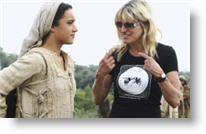
Producer Wyck Godfrey also said that Christianity was his own “personal faith,” and Director Catherine Hardwicke said that she was raised in a Presbyterian Church. In the past, even when Hollywood tried to make Biblical films, they failed to understand the religions they were depicting, and the result was too often that Hollywood would offend the very people they were trying to reach. Martin Scorsese’s film is a prime example, but even movies like “King David,” starring Richard Gere as David (!), proved box office flops, and Mimi Roger’s “The Rapture” proved more blasphemous than prophetic.

What then, made Hollywood, decide to return to the Biblical epic? Mike Rich says that “we owe a debt to ‘The Passion of the Christ’,” and Wyck stated that “we are thankful that (‘The Passion…’) opened the door” for “The Nativity Story.” The movie showed that religious films, when made by someone who understands what they are filming, can be successful.
Producer Wyck Godfrey, a professed Christian whose credits include Will Smith’s “I, Robot,” believes that spiritual movies are making a comeback, but not necessarily “religious” movies. He said “I, Robot” was “embraced by the Christian community” because of its spiritual message, “but nobody said, ‘Oh, they’re making another Christian science fiction film’ …films that inspire you and touch you emotionally and dramatically, and speak to your basic faith, are important, and I think we’ll try to (more films) like that.”
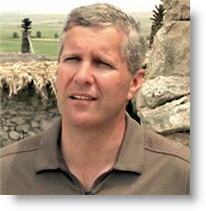
How then did “The Nativity Story” develop? Mike Rich says that…
“I saw both Time and Newseek had articles on the nativity …and I read the articles, and it struck me that the story had never really been told from a character viewpoint.”
What were Mary and Joseph like? What type of faith did it take for them? Mike had been toying the story for a while but it was not until his father died in the spring of 2005 that he decided to write the script. “There never was a man who cherished Christmas more than my father.” This film was then dedicated to Mike’s father, in spirit.
Mike wanted to make a film that was historically accurate, but still essentially about faith. “We decided very early on that we were going to focus on the human elements of the story.” In terms of the story itself, Mike didn’t want an overblown movie with blaring trumpets announcing the birth of Christ, but instead “we opted for something like the wind blowing through the trees.” He also wanted the dialogue to feel like it was not forced but “there are certain portions, such as the annunciation, where you can’t dicker with that dialogue; that dialogue is sacred.”
Essentially it was to be a story about faith. As Catherine Hardwicke commented, “you’re visited by an angel, but he doesn’t leave an instruction book.” What do you do? She calls it a “spiritual journey.”
This spiritual journey was strengthened by the historicity of the film. Mike said that “the historical elevated the spiritual aspect” of the movie. For example, “research shows that Nazareth, which we so often visually romanticize …in reality Nazareth was a poverty-stricken, small town.” Mary and Joseph are shown as poor individuals trying to make it in a world where Roman taxation was increasingly becoming a burden.
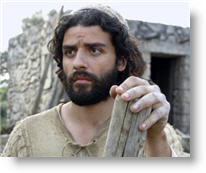
To increase this historical feel, every actor went through a Biblical lands “boot camp.” Oscar Isaac (Joseph) spent weeks learning to use the sort of tools which were available back then. He did masonry work and built one of the walls of the house where Mary and Joseph lived. Keisha Castle-Hughes (Mary) also learned to sow seed and practiced many other aspects of ancient life. Jewish traditions were also a part of the boot camp. Mike Rich commented that Jewish leaders had previewed the movie and told him “we appreciate your respect for our tradition.”
One aspect of the historical flavor lay in the casting. Cast members were selected from around the world. Mike Rich said,
“We wanted a truly global cast …New Zealand, Guatemala, Trinidad, Cameroon, Ireland …one was born in Nazareth …everywhere by America.”
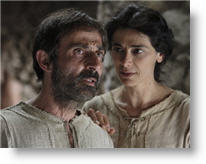
This might seem odd, considering that the story is primarily about Jews, but, as Catherine Hardwicke (who admitted she didn’t even know Joseph and Mary were Jewish until she read the script!) said, they were aiming for the “olive color skin” which Jews would have had in the Middle East at that time. Producers Marty and Wyck said…
“We went all around the world to find the perfect actors, and we chose people that looked of middle-eastern descent.”
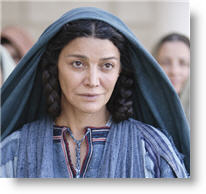
In the end, it worked very well. Shohreh Aghdashloo remarked “never in my life did I expect that I would be able to be Elizabeth; me a Muslim girl!”
Of course, one problem with an international cast would naturally be the accents. If Joseph began to speak in a thick hispanic accent, or if Mary began to lay on an even thicker New Zealander accent, the film would fall apart. For that reason Jessica Drake was hired as a dialect coach to give “a period feeling of Israeli middle eastern accents.” Shohreh Aghdashloo found it easiest to speak in the proper accent, but thanks to Jessica, everyone soon sounded like they belonged.
Just as interesting as the international flavor of the cast were the cast members themselves. Wyck said they wanted “accomplished actors and not stars.” This was the first mistake that 1985’s “King David” had made when they cast Richard Gere as King David. Here there was no such mistake. Oscar Isaac made a great Joseph, but, in person, he was very different from the reserved, quiet character he played. Oscar was a very jovial and jolly man who liked to crack jokes and shake hands. He commented that his father told him, “I don’t want to go to church and see your face with candles around it!” He also told us that his first acting job was in a church play about the Nativity, as a young shepherd boy!
Producer Marty Bowen joked that he played the donkey.
In the end, Oscar did something most actors never do …he passed out handshakes all the way around and spent time chit-chatting with media members. Let us hope that a few years in Hollywood don’t change him too much! Much the same can be said for the other cast members. They did not carry the baggage with them that some better known actors might.
The sense of humor that Keisha (Mary) and Oscar had may have helped them in a tight filming schedule. The movie was made in only eleven months, with the first draft coming out in December of 2005. Such a quick schedule is rare in Hollywood, but the studios wanted the film out in time for Christmas of this year. Fighting the hectic schedule, the producers were able to get the film finished for an estimated budget of $35 to 40 million dollars and set to premier on an amazing eight thousand screens worldwide!

The filming, however, was not without difficulties. The actors and director told us numerous anecdotes about the filming; most of which involved animals. Catherine Hardwicke noted that there were three donkeys used in the film. The “Diva donkey” was the main star and had two stand-ins. According to Oscar “that donkey did not like to co-operate, a lot!” The problem was exasperated by the Humane Society which wanted the animals treated better than humans.
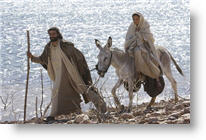
In the scene in the manger, Catherine explained that one of the donkeys kicked on the members of the set and skinned its leg in the process. The Humane Society then told them that they could not use the donkey because it was injured! She then ordered another donkey, but the Humane Society objected that the new donkey suffered from hemorrhoids! Finally, the Humane Society ordered them to use a seat cushion, if they were going to force the donkey to sit down! Catherine then threw the cushion under the ass’ buttocks and piled up straw to cover the cushion. In the end, by the time the manger scene was finally set and ready to go, they were not allowed to film, because it was past the baby’s bedtime, so the entire day had been wasted!
To further complicate matters was the fact that Shohreh Aghdashloo was scared to death of chickens! She had been attacked as a child and has been afraid of them ever since, so when a chicken pecked her on the foot she let out a mini-scream!
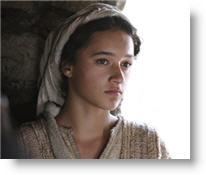
On a sidenote, it is important to discuss rumors swirling about the young, 16 year old, unwed star of “The Nativity Story.” Keisha Castle-Hughes announced shortly after the filming had been completed that she was pregnant by her boyfriend. Of course, the tabloids have been making plenty of jokes about the virgin-no-more or the immaculate conception, but her friends put it in perspective. Producer Wyck Godfrey said, “What I really admire about her is that she chose …to put her career aside and to raise this child, and I think that that is very admirable …there are a lot of people who would have told her different.”
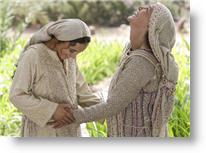
Indeed, in this day and age it would have been easy to get an abortion and pursue her career, but, as Catherine Hardwicke reports,
“She wants to do the right thing, no matter what anyone says, she’s going to do the right thing and raise this child, and love this child, …so I am really proud of her …she will shower this child with love.”
The producers also noted that “the difficult part was coming out and telling people.” With the public attention and spotlight placed on her, it would have been easy to avoid responsibility in a society that seems to have lost respect for motherhood, but she is choosing to have the baby and to marry the father, so we can only support her and pray for child. She may have made the wrong choice with her boyfriend, but she has made the right choices since then, so she deserves our prayers and respect.
To conclude the interviews, we got back to the subject of the movie itself. Mike Rich commented that “it is not a love story, it is a faith story.” Oscar Isaac said,
“It was about the humble …I never realized it was such a story about humility …even while doing the film, I thought it was a love story, but when I saw the film, it was like, a humble story?”
Oscar said that Joseph’s faith was not about someone who is fearless, but about “someone who is afraid and does it anyway.” Faith is a constant throughout the story. Consider that Joseph was told in a dream that Mary was pregnant by the Holy Spirit. Mike Rich noted that “a lot of people would just wake up and think what a bad dream.” Even accepting the dream as a vision from God was an act of faith. Thus faith and humility are at the center of the story.
Oscar again explained it best, “it is not the rich and powerful that God is exalting, but the humble.” He summarized the story in this way, “it was a revolutionary idea. That God decided to come to Earth and make himself flesh to an ostracized people.” It is the story of the Nativity.
See our REVIEW of “The Nativity Story”
